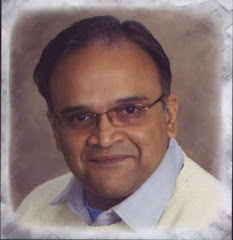IRENE stands for Image Reconstruct Erase Noise Etc. It is a turntable ( a record Player) with a camera instead of the Stylus. A high definition Camera captures images of the Grooves on a record and converts it into a Sound file. Records that a are to sensitive or damaged or even broken can be "read" and thereafter Listened to in this.
Other than the Library of Congress in the United States, RMRL is the only place to have this equipment. They hope to create an archive of our "Sound" history. Good luck to them.
MANY PEOPLE HAVE DONATED THEIR OLD 78 RPM RECORDS TO THE LIBRARY....said Sundar , when I went ( to donate some of my Grandfather's old Tamil Books). I think the best way for us to get a digital disc of all this music lying in our attic is to "donate" it to RMRL. They in turn will give you a Digital Copy.You get to listen to that "old" S G Kittappa or Saigal and also ensure that this heritage is preserved well for posterity.....
My entire collection of old Tamil Drama and Cinema Handbills (bit notice) was given to them to microfilm and load in their database for use by researchers. So too some of the Letters of my maternal great grandfather Rt Hon V.S.Srinivasa Sastri. I am not just talking but have walked the Talk.
My appeal to all of you is to take the trouble this "summer" , climb up the Attic - (Paran) and pull out those old shellac plates....Bring it over to RMRL and get to listen to the Music. For those of you who do not know about RMRL , it is in Tharamani. Just Google it......
Sundar on the Left with IRENE and the Sound Engineer managing "her"
The Image of the Groove as seen on Irene
The Roja Muthiah Research Library (RMRL) project was initiated to preserve, catalog, and expand the collection of Roja Muthiah, who during his lifetime amassed one of the world's finest private libraries of Tamil publications. The University of Chicago Library spearheaded a global effort, which resulted in the founding of the Roja Muthiah Research Library to house the collection in 1996. The RMRL provides research materials and facilities for students of Tamil studies in a variety of fields spanning the humanities, social sciences, and sciences.
The Library's notable strengths are its holdings in classical and modern literature, literary criticism, medicine, cinema and the related culture of printed works (such as song books), folklore, material by and about women, religion and philosophy, and numerous publications of historical value. The collection is comprised of more than 100,000 volumes of books, journals, and newspapers. In addition there are rich holdings of oleolithographs from Ravi Varma's workshop, nearly 30,000 journal abstracts and indexes, an enormous collection of clippings, drama notices, wedding invitations, business and family correspondence, and palm leaf manuscripts. Most of the publications date from the later half of the nineteenth century and the first half of the twentieth century.
The Hindu too wrote a nice piece on this "new arrival" -http://www.thehindu.com/news/cities/chennai/article3405580.ece









